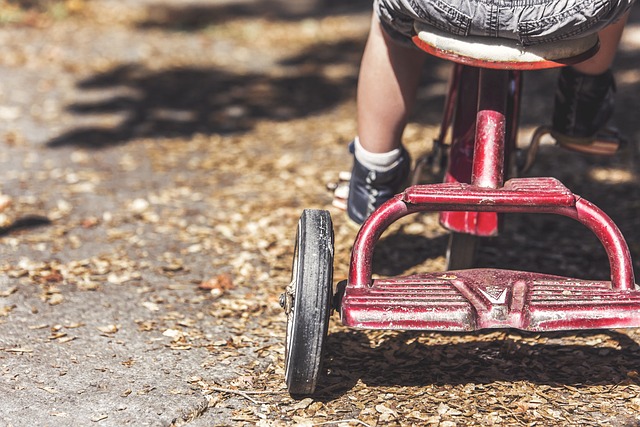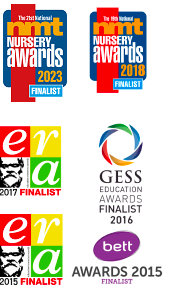The early years of a child’s life are fundamentally significant for their cognitive, social, and emotional development. During this period, children are naturally curious and eager to explore their environment so it is crucial to understand the Characteristics of Effective Learning in the Early Years to foster a conducive environment that encourages growth and development.
The foundation of CoEL is built on ways children learn rather than “what” they are learning, focusing on the quality of the process and reinforcing that during children’s earliest years, they will form a mindset towards learning that will last a lifetime.
Without forgetting that children are individuals who bring their own needs, talents and histories to the learning environment, it is paramount that a supportive practitioner, and the environment they provide, encourages these CoELs to occur.
Characteristics of Effective Learning (CoEL) is commonly used alongside the EYFS framework and supports practitioners in planning and guiding children’s activities based on the different ways that children learn, and reflect these in their practice through their planning and guiding of children’s activities.
On eylog, you can link your observations to additional frameworks. Select ‘CoEL’ from the framework bar at the top of the observation screen. Select one or more statements from any of the three areas by clicking on the checkbox at the end.
So how can you ensure you are providing these opportunities for children?
Active Learning
One of the most prominent Characteristics of Effective Learning in Early Years is active learning. Children learn best when they are actively involved in their learning process. They need opportunities to explore, experiment, and engage with their surroundings.
Observing children in the setting will allow you to find out what they like and need to help them progress towards their next steps. This enables you to plan and provide fun activities and experiences that will make active learning happen more easily as the child will be enjoying the experience.
Support children to undertake age and developmentally-appropriate tasks, encouraging and championing them as they persevere and providing positive reinforcement. Provide a range of resources and activities that allow children to express themselves by selecting the items or activities of interest to them and ultimately make learning more tailored to the child’s needs
When providing a learning environment, be mindful of children’s attention spans, sometimes they may need guidance and help to remain focused, whilst also allowing the child’s imagination and creativity to be explored.
Incorporate a balance of child-initiated and adult-led activities into your routine and planning. Also encourage children to develop their attention and concentration skills in all areas of the routine and activities, not just the sections that interest them. Sitting during circle time and listening to instructions whilst playing outside as well as using equipment safely and responsibly are key skills in any child’s development.
Playing and Exploring
Play-based learning is an effective approach that allows children to learn at their own pace while enjoying the process. It encourages creativity, problem-solving skills, and critical thinking. Through play, children can develop a sense of self-direction and independence as they make choices and decisions about what they want to do.
A stimulating environment is vital to ensure that this area of learning is maximised to its full potential. To practice skills learned and be allowed to play with things they enjoy and have time and freedom to repeat these actions.
Small-world play and role play are beneficial play areas. Children will play with toys and activities familiar to them, whilst becoming intrigued by new experiences and toys they see their peers enjoying.
Activities should be challenging yet appropriate and relevant to the children’s stage of development and age whilst also providing a safe space to explore and build their confidence in trying new things.
Encourage children’s natural curiosity, offer support and encouragement, show them how things work and model how to do things. Provide opportunities to repeat activities and new skills, so children have the chance to practise and become better at mastering these skills once they try them over and over.
Creating and thinking critically
Creating and Thinking Critically underscores the importance of developing thinking skills and problem-solving abilities in young learners. Some areas of a child’s development can not be taught so it is important to allow children the freedom to express themselves, have a voice and be listened to.
Provide a variety of resources so that they may self-select and use their imagination, and encourage activities where you can question the child on what they believe the outcome will be and why.
Use explorative language, rather than say “What is it” when a child presents you with their artwork or construction, say “Explain your picture/building to me” allowing them to express their imagination, independence and their own ideas.
Children will start to make links and connections and this can be supported within all areas of the curriculum to embed the learning objectives. When planning topics and themes, provide opportunities to reinforce links and connections between “Setting Life” and “Home Life”. This is why the function to allow parents to upload observations ensures parents are partners with their child’s learning and development.
Children need to be given choices and encouragement to try new things and the opportunities to execute these. Children like familiarity and will often head towards the same activities or zone within a setting, they feel safe and comforted with their choice and are aware of their skills and capabilities. Try to be spontaneous at times and encourage children to join in new activities or provide a new environment for them to encourage their favourite activities. Stay out in the rain. Create an outdoor kitchen. Bring the trikes and scooters inside.
Understanding these Characteristics of Effective Learning in Early Years can help parents and educators create an enriching environment that nurtures young minds’ growth potential optimally. Remember that every child is unique with individual strengths and weaknesses; therefore it’s important to tailor your approach based on each child’s needs while keeping these fundamental aspects into consideration.
By promoting active play-based learning experiences filled with sensory exploration opportunities while nurturing curiosity through positive reinforcement strategies we can ensure our little ones have all they need for successful lifelong learning journeys!

